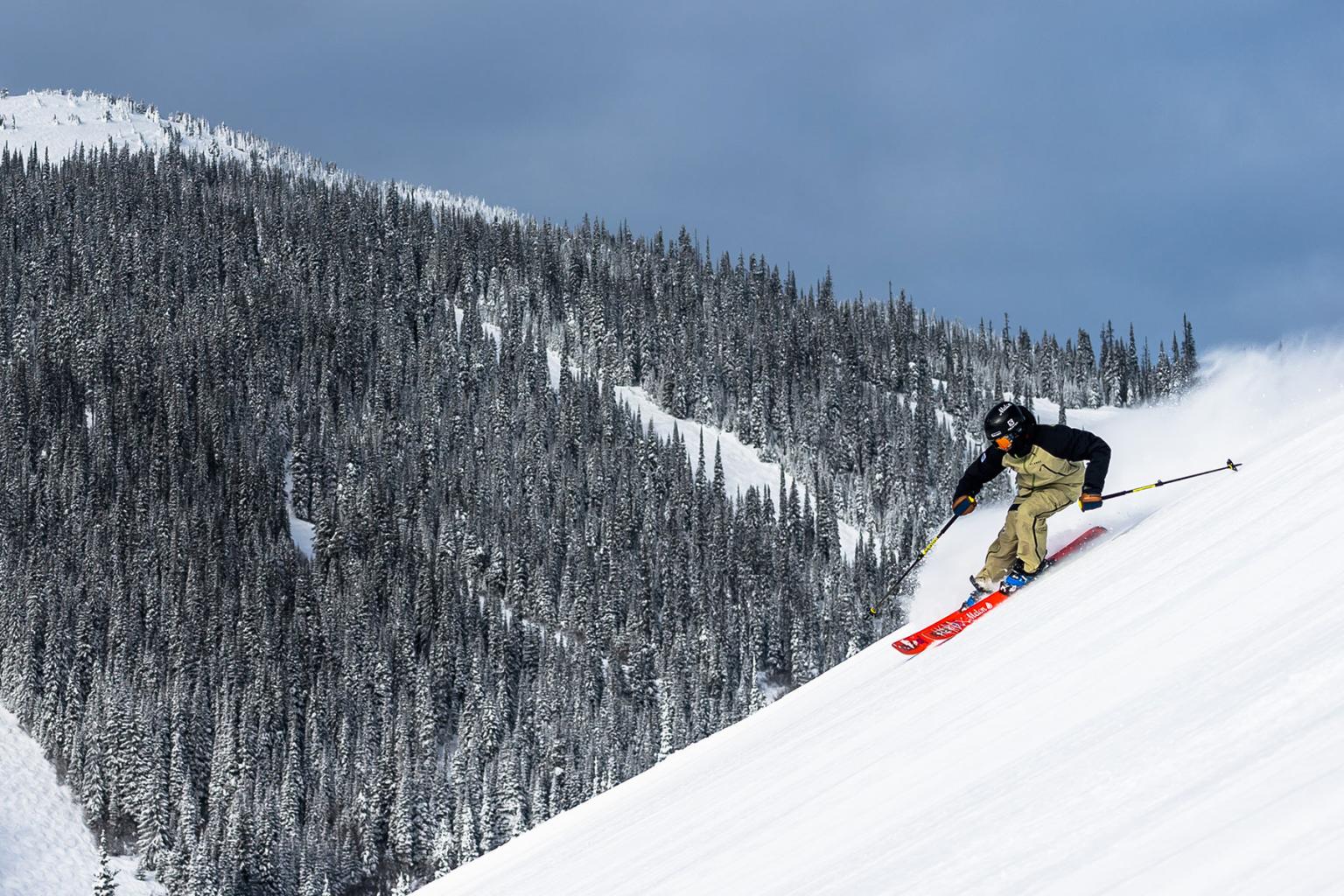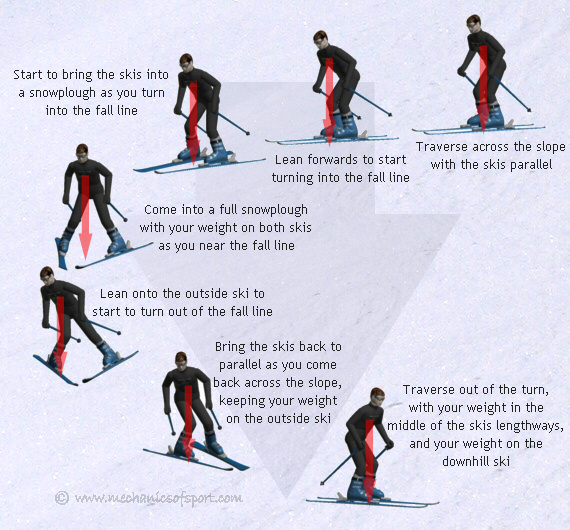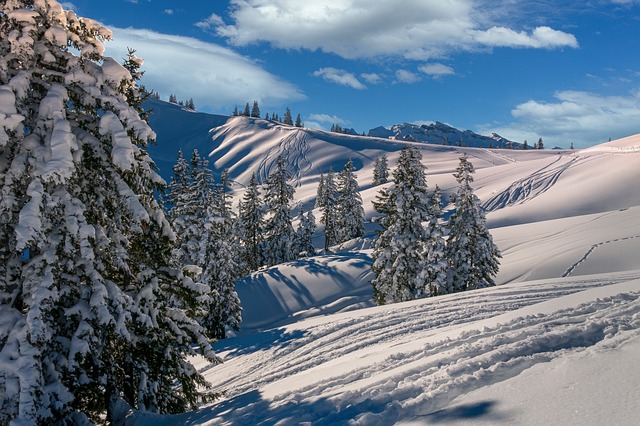
You need the right gear for outdoor adventures, whether you are a snowboarder or a skier. There are many options. From breathable, super tough shells to affordable 3-in-1 designs, there's a jacket to suit your needs.
A ski jacket should not be too heavy to deal with the elements. It should be easy to pack away in a backpack, have plenty of storage for goggles and other essentials, and fit comfortably with a base layer beneath.
If you're a backcountry skier who spends much of his or her time off-piste, you'll need a jacket with higher breathability and waterproof ratings for conditions that can be as unpredictable as they are extreme. This is why we like ski-specific jackets from Patagonia and Arc'teryx. However, the market is full of models that meet these standards.
The Fjallraven Eco-Shell, for example, is a highly regarded design that boasts a 10k/10k water resistance rating and impressive levels of breathability. You can also choose from a variety of fashionable color options, including a Velcro cuff, a sleek hood and Velcro cuffs that are helmet-compatible.

A great choice for backcountry skiing is the Rab Khroma Kniketic, a jacket that can be worn for multiple days. It features a thick, durable shell with a RECCO reflectiveor, large front pockets and a helmet compatibility hood. All of this at a very light 1 pound 3.8 ounces.
This is a slightly more expensive option than the Odin, Triolet and Triolet. However, it is worth every penny. It has a premium Gore-Tex membrane, water-resistant zippers, and a helmet-compatible hood for comfort.
The most popular and recognizable brand in the market, Patagonia makes a variety of excellent jackets for a broad range of activities. These jackets are available in both men and women in a range of sizes and colors. They also come with everything you need for backcountry sports.
Many of their jackets such as the Object and Powder town can also be worn with non-insulated outerwear. These versatile pieces can be worn as all-around pieces and have underarm vents. There is room for a base layer and a midlayer. They are also certified by Bluesign to be environmentally responsible.
To find the perfect ski jacket for you, consider what features are most important to your needs. Compare the different options side-by-side to see which one fits best. Make sure to take your measurements and match them with the size charts from each manufacturer.

Before you make your final decision, check out the jacket's return/exchange policy. Everybody is different, so not all skiers are the same height.
A woman weighing 125 lbs may struggle to find a ski jacket that fits properly. A model that's slim and athletic will be ideal for her. It can also accommodate a base layer or a middle layer.
For those who love a more relaxed fit, consider a relaxed shell, which is usually slightly more roomy than an athletic shell, but it's still a decent option. Most ski jackets are equipped with a removable, or fixed, hood. A fixed hood provides more protection when you are out on the pistes. However, a removable or adjustable hood is great for warmer conditions and when you are using it as a snowboarding coat.
FAQ
How much luggage should you take?
The length of the trip will affect how much luggage that you can take. Hand baggage is usually limited to 20 kg if you travel by plane. For a bus or train ride, however, you will require more space.
At the airport, you will receive a form that you need to complete with your details. This will include information such a weight of your bags, and whether you need assistance with checking them in.
This must be done before you leave your home. If you don’t check it, you might end up waiting hours for everyone else to do so.
Traveling light is the best option, because you never really know what could happen. You won't be able to use your bag if it gets lost.
Which countries have the best cuisine?
The food available in each country is different. It's therefore difficult to identify the best countries for food.
But we can show you which countries serve the best food!
TripAdvisor users have ranked the following countries as their top three.
-
Italy – For its outstanding food, TripAdvisor users voted Italy number one.
-
France - France was ranked second because of its rich culture and cuisine.
-
Spain - Spain came in third because of its stunning beaches and amazing weather.
Should I get travel insurance?
Travel insurance is essential if you are planning on doing something adventurous. You should ensure that you have coverage for all types and forms of adventure sports.
Skiers, for instance, should have adequate medical coverage. You should also think about getting coverage for theft loss and damage.
Consider purchasing cancellation coverage. This allows you to cancel your holiday without having to pay any penalties.
Additionally, it is a good idea to ask for emergency evacuation coverage. You can also be taken off the mountain in the event of an avalanche, or another natural disaster.
Where can I find cheap accommodation when traveling abroad?
Hostels, hotels, guesthouses, and bed and breakfasts are all options for cheap accommodation.
Hostels offer affordable accommodation in dorm rooms with shared bathrooms and living areas.
Hotels are usually located in touristy areas and provide private rooms with en suite bathroom facilities.
Hostels are very similar to guesthouses but have more rooms and less people sharing them.
Bed & Breakfasts are very popular among budget-conscious travelers. Guests can stay in their own private homes and have a full breakfast included in their stay.
What should I pack for a vacation trip?
You need to know what you want to do on your holiday. You don't just need to pack clothes. You should also consider where you are going to be staying and for how long.
Think about the activities that you are interested in. Scuba diving is a great option if you're going to exotic destinations. If you plan on staying longer, you may want to attend local festivals.
You should let the people who are going to be caring for you know if you have any medical issues.
Statistics
- You can use compression sacs or cubes to reduce the volume of your clothes by up to 80%—this is especially convenient for bulky items such as sweaters and jackets. (eaglecreek.com)
- Between the ages of 11 and 13, kids, or tweens, will likely want some autonomy but also need boundaries. (travelandleisure.com)
- Case in point: the private island of Ilha Caldeira, less than seven miles off the coast as part of the Primeiras and Segundas Archipelago, is located within the marine-protected area with 20 percent of the country's intact living coral. (travelandleisure.com)
- Pack sweaters, jackets, and underwear in reusable compression bags creating up to 75% more space in your luggage. (wikihow.com)
- Alcoholic beverages with 24% alcohol or less are not subject to limitations in checked bags. (tsa.gov)
External Links
How To
How to plan your next vacation
Booking flights, hotels, car rental, and activities are just a few of the many aspects involved in planning a trip. It involves important considerations like your budget, destination choice, weather forecast, etc.
These points should be kept in mind while you are planning your next holiday.
We've created a step by step guide to help you plan your next holiday. This guide was compiled based upon customer feedback and experience. We hope that by following this guide, you can plan your next vacation without any hassle.
Steps:
-
Plan your Budget. This is one of the most important steps to prepare for a trip. Before you start to think about where to go or what to do, it is important to determine how much money you have available for your trip. If you don’t have sufficient money, you may have to cancel your travel plans.
-
Book Flights - The first thing you should do after deciding on your budget is book your tickets. You should ensure that you get the best deal possible at the lowest price. You should also check to see if any airlines offer special deals during specific seasons. These deals could save you a lot of money.
-
Choose Your Destination - Once you've booked your ticket, the next thing you'll need to decide is where you'd like to travel. Multiple factors play into the decision of where to go, climate (when you can visit), culture (how friendly they are) and cost (how expensive it is).
-
Finding Accommodations - Once you have chosen your destination, it is time to find accommodations. There are many options for accommodation, from budget hostels to luxurious suites. Your needs and preferences will determine the type of accommodation that you choose. For example, staying in a hotel may not be ideal if you're looking for a place close to the city center. However, homestays may be more suitable for you if your preference is quieter and away from crowds.
-
Select Activities & Attractions - After selecting your accommodation, now is the time to select the activities and attractions you wish to include in your itinerary. Depending on the length of your stay, you can either choose only a few activities or add several new ones throughout your trip.
-
Determine your schedule - After you've chosen the attractions and activities that you would like to include in your itinerary, it's now time to create it. A fixed schedule will ensure that you get the best value for your trip. But, it's possible to enjoy your trip more if your schedule is flexible.
-
Create an Itinerary - An itinerary is a list of all information related to your trip. It is important to write down everything you need, from accommodation to meals, to activities to restaurants, and to create a list.
-
Research Online – Make sure you research everything before you leave on your trip. Read reviews and testimonials to find out what other travelers think about different destinations. This will allow you to plan your trip accordingly.
-
Don't Overpack - This is one of the most common mistakes people make when packing. Try to bring just three sets of clothes instead of five. You should bring clothing that suits the conditions.
-
Be Prepared - Finally, be prepared! Be prepared before you set off on your trip. You don't want to waste time searching for important documents while you're still in transit.